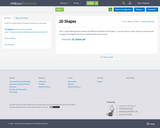
CESA #1 EL OER Project 2D Shapes slideshow, visual aides
- Subject:
- Mathematics
- Material Type:
- Lesson
- Date Added:
- 05/25/2018

CESA #1 EL OER Project 2D Shapes slideshow, visual aides

ABCs of a School Meeting is a self-paced training for educators and families which covers:
Why family involvement matters
Types of school meetings
How to prepare
The importance of effective communication
Techniques to build partnership with your child’s team
The goal of the training is to enable families, teachers and students to have knowledge of the different kinds of school meetings related to disabilities. The takeaway is to look for the best ways to expand communication and build a team with the school and family to support the student with disabilities.
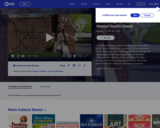
This episode features Spelman College student with ADHD who is acing the test when it comes to confronting mental health challenges. Experts offer tips to identify red flags and respond positively to help children with mental health challenges. We introduce “Difference Maker” Dr. John Rhodes, a prominent cardiologist who might never have become a doctor without his own dyslexia diagnosis.
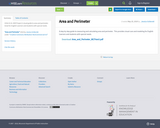
CESA #1 EL OER Project A visual guide to area and perimeter. Great for English Learners and students with special needs.
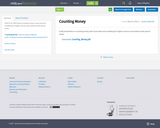
CESA #1 EL OER Project Counting money, visual cues and modelling for English Learners and students with special needs

Developing a Vision for and with Your Child is a self-paced training for educators and families which covers:
What do we mean by vision?
Why is vision important as an advocacy tool?
How can a vision statement support my child at school and in the community?
How do we develop a vision statement?
The goal of the training is to enable families, teachers and students to have a vision of a future. The vision is a work in progress that will develop over time, but sets goals and directions for students with disabilities.
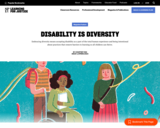
In the article “Confronting Ableism on the Way to Justice,” activist Keith Jones remembers the bias and deficit-based approach he experienced in school: “Being Black and a child with cerebral palsy, or ‘crippled’ as I was called, neither I nor my classmates were expected to put forth any effort to learn. So, little effort was spent on teaching us.” Now, Jones, a leader within the disability rights movement, advocates for disability representation in the broader social justice struggle, including in education because “we can’t have inclusive schools without disability-inclusive spaces and accommodations for learning.”
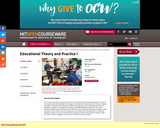
This course is designed to prepare you for a successful student teaching experience. Some of the major themes and activities are: analysis of yourself as a teacher and as a learner, subject knowledge, adolescent development, student learning styles, lesson planning, assessment strategies, classroom management techniques and differentiated instruction. The course requires significant personal involvement and time. You will observe high school classes, begin to pursue a more active role in the classroom in the latter part of the semester, do reflective writings on what you see and think (journal), design and teach a mini-lesson, design a major curriculum unit and engage in our classroom discussions and activities.

This video collection features strategies for comprehensive literacy instruction for students with significant cognitive disabilities. The purpose of the collection is to support educators and families in understanding how all students can learn and make progress in Common Core English Language Arts standards.
In each video, classroom educators demonstrate research-based instructional strategies in literacy, language and communication including the use of augmentative and alternative communication systems. The videos feature students in both inclusive general education classrooms and self-contained settings.

One of the largest healing arts sanctuaries in the country, a quilt of dreams, using dance to challenge body norms and a graphic artist’s illustrations about ADHD go viral.

The Minnesota Governor's Council on Developmental Disabilities breaks down the history of developmental disabilities in two parts. Part one begin with the ancient era to the 1950s and part two begins with 1950 to today. Each era is presented with a vast amount of valuable information about people with disabilities along with video clips and quotes.
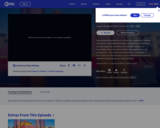
Spurred by the spectacle of a circus tent outside his Oakland apartment, a disabled filmmaker launches into a meditative journey exploring the history of freakdom, vision, and (in)visibility. Shot from director Reid Davenport's physical perspective - mounted to his wheelchair or handheld - I Didn't See You There serves as a clear rebuke to the norm of disabled people being seen and not heard.
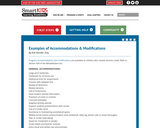
Smart Kids with Disabilities, Inc. is a free website that focuses on resources, information, legal education, etc. for parents and/or educators of students with disabilities.  The mission of the website organization is: Our mission is to educate, guide and inspire parents of children with learning disabilities or ADHD. Our aim is to help parents realize their children’s significant gifts and talents, and to show that with their love, guidance, and the right support, their children can live happy and productive lives.
Jane B. Ross, M.S. is the founder and executive director of Smart Kids with Learning Disabilities. She is a former publishing executive and consultant who was determined to help other parents who were as clueless as she was when she discovered that her bright and resourceful 10-year-old son could not read. Today her son holds a Masters degree from the Columbia University Graduate School of Architecture and works as an architect in New York.
The site also allows educators and parents many option to review accomodations and modifications. Â It has mutltiple links for all of the aforementioned queries as well. These include but are not limited to tech tools, definitions of disabilities, evaluating the child, RiT, etc.Â
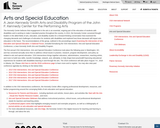
This resource offers ongoing professional development, resources, and further programming around the converging fields of arts education and special education. Includes reseources for educators and parents, webinars, professional papers and an extensive bibliography of journal articles on arts education and special education.
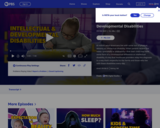
61 million adult Americans live with some sort of physical, sensory, or intellectual disability. When parents receive the news—prenatally or postnatally—that their child may have some form of a chromosomal difference or intellectual disability, it’s key that healthcare providers relay this diagnosis in a way that’s respectful to the family and those who live with these disabilities every day.

In this multidisciplinary lesson, students examine stereotypes about people with physical disabilities. Using clips from Still Tomorrow, a documentary about Chinese poet Yu Xiuhua, who has cerebral palsy, students will gain awareness of the clues they use to judge people. To better understand Yu’s condition, they’ll conduct research about cerebral palsy and write an “advice blog” addressing stereotypes about people with disabilities. As part of that research, students will consider how they choose what to click on when they do online searches.
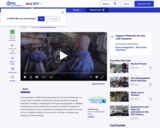
In this episode of NJEA’s Classroom Close-up, Fort Lee’s School No. 1 is using music to extend concentration among general and special education students in kindergarten through second grade. In addition, working one-on-one using dials to analyze a student’s response to various genres of music, educators are studying the impact the music has on a student’s ability to focus, which will help to improve and enhance student learning.
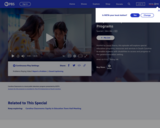
Hosted by Laura Ybarra, this episode will explore special education programs, resources and services in South Carolina to enable students with disabilities to access and progress in the general education setting.
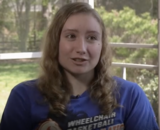
Meet the GIRL!: Lizzy is 18 years old and an athlete and a leader. She was born with spina bifida and has embraced herself and her GIRL Power. She is an archer as well as a basketball player. She played as a point guard for the Rollin Rockets in Charlotte NC. She has the goal of playing for the U.S. National team one day in the Paralympics and she has the tenacity to get there!
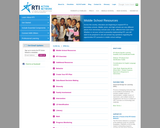
Across the country, educators are beginning to expand RTI to secondary schools. Middle, junior, and high schools are very different places from elementary schools and, in fact, different from each other. Whether or not your school is presently implementing RTI, you will want to be prepared to ask and answer key questions regarding the opportunities RTI presents in high school settings.